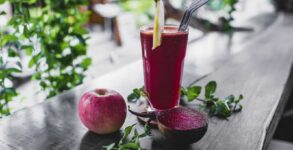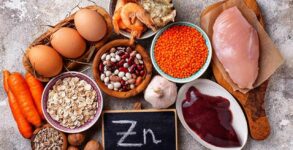7 Nutrient-Rich Foods: Incorporate a selection of the highest-oxygen goods into your diet to promote optimal physical health. Life is undoubtedly impossible without oxygen. Oxygen plays a vital role in cellular processes, including the formation of new cells and the maintenance of their functions. However, reduced oxygen levels affect a great number of individuals for a spectrum of reasons.
To assist in restoring homeostasis and balancing the oxygen levels in the body, we shall examine a selection of the most beneficial foods rich in oxygen. These foods are rich in oxygen and comprise green vegetables, fruits, legumes, seeds, and sprouts. The justification for these foods is their elevated water content, which comprises two parts oxygen.
5 Fruits for Joint Pain Relief and Inflammation Reduction: Nature Remedy
Top foods that are rich in oxygen to incorporate into your menu:
The spinach
Spinach, the progenitor of leafy greens, is an excellent source of numerous antioxidants, iron, and vitamins A, B3, B5, and C. Spinach exhibits properties that include anti-inflammatory, antioxidant, hypoglycemic (facilitating the reduction of blood sugar levels), and hypolipidemic (reducing blood lipid levels) effects. Additionally, it neutralizes oxygen-reactive substances. One way to initiate the integration of this into your daily diet is by garnishing your dish with one cup of infant spinach. Furthermore, spinach can be blended with other ingredients to produce a green smoothie.
Mango fruit
It is noteworthy that mature mangoes are rich in iron, copper, and vitamins A, B3, B5, B6, and C. These nutrients are critical for enhancing blood oxygen saturation levels. They contain phenolic substances, and antioxidants such as vitamin C, and carotenes, all of which contribute to the maintenance of general health. In addition to reducing inflammation, protecting the liver, and lowering blood pressure, mangoes also fortify the immune system. It is recommended to ingest a half-cup of ripe mangoes, although they can also be incorporated into smoothies or breakfast fruit bowls. Given the high sugar content of ripe mangoes, individuals with diabetes should consult their physician before consuming them.
The pomegranate
Choline is also abundant in pomegranates, along with iron, copper, zinc, and vitamins B3 and B6. Additionally, they improve oxygen delivery and increase the bioavailability of nitric oxide, which enhances blood circulation. Consistent ingestion of pomegranate seeds or freshly strained pomegranate juice facilitates vasodilation, thereby enhancing the circulation of blood. As a result, there is less chance of tissue injury due to insufficient oxygen absorption. You can include this alkaline food that increases oxygen saturation in your diet by consuming 375 ml of pomegranate juice daily, a cup of pomegranate kernels daily, or possibly even by incorporating it into salads.
Peach preserves
It may come as a surprise to discover that peaches are an excellent source of antioxidants, which support healthy body functions and protect cells from oxidative damage, including vitamins A, B3, and B5, iron, zinc, and B6. This palatable summer fruit is marketed as a functional diet on account of its potential to improve overall health. One large peach per day or every other day will enable you to incorporate this phenomenal food source of oxygen into your diet. Furthermore, it can be integrated into chilled salads, smoothies, and beverages.
The garlic
Garlic is widely recognized for its potential cardiovascular benefits, including its ability to reduce cholesterol levels and its supposed antimicrobial, antiplatelet, and antibacterial properties. A study was conducted on individuals diagnosed with hepatopulmonary syndrome (HPS), a condition characterized by liver disease affecting the airways. The results of the study indicated that the consumption of garlic could improve arterial oxygen levels at baseline and reduce hypoxemia. A daily minimum of one clove of garlic may be incorporated into cuisine. To experience an uncharted flavor profile, one may also incorporate it into marinades or curries, or consume it uncooked.
Intestinal Legumes
In addition to iron, potassium, and zinc, legumes are rich in B vitamins. Lentils, kidney beans, pinto beans, chickpeas, fava beans, and bean sprouts are all examples of legumes. They are superb sources of plant-based protein and contain no fat. Legumes may improve lipid profiles, blood pressure, type 2 diabetes, blood sugar, and weight management. By eating half a cup of their favorite legumes every day, one may improve blood and oxygen circulation to all organs.
Eggs
In addition to selenium, protein, vitamins A, D, B5, B6, B12, and E, and K, beta-carotene, and selenium, hard-boiled eggs also comprise zinc, potassium, and iron. An investigation revealed that egg yolks, which are notorious for their high cholesterol content, also possess analgesic and anti-inflammatory properties. Consume three to five whole eggs per week, and those with hypertension should limit or avoid egg yolks.


















